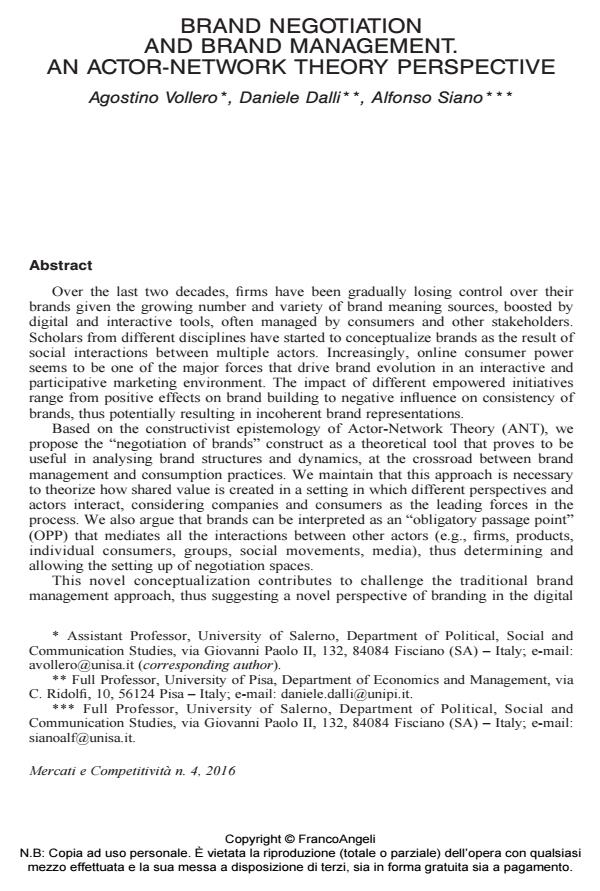Brand negotiation and brand management. An actor-network theory perspective
Journal title MERCATI & COMPETITIVITÀ
Author/s Agostino Vollero, Daniele Dalli, Alfonso Siano
Publishing Year 2016 Issue 2016/4
Language English Pages 19 P. 23-41 File size 139 KB
DOI 10.3280/MC2016-004003
DOI is like a bar code for intellectual property: to have more infomation
click here
Below, you can see the article first page
If you want to buy this article in PDF format, you can do it, following the instructions to buy download credits

FrancoAngeli is member of Publishers International Linking Association, Inc (PILA), a not-for-profit association which run the CrossRef service enabling links to and from online scholarly content.
Keywords: Brand management; actor-network theory (ANT), consumer power; negotiation.
- IMC in digitally-empowering contexts: the emerging role of negotiated brands Agostino Vollero, Don E. Schultz, Alfonso Siano, in International Journal of Advertising /2019 pp.428
DOI: 10.1080/02650487.2018.1535221 - From brand control to brand co-creation: An integrated framework of brand paradigms and emerging brand perspectives Alfonso Siano, Agostino Vollero, Alessandra Bertolini, in Journal of Business Research /2022 pp.372
DOI: 10.1016/j.jbusres.2022.08.001 - What is happening to the brand? Maria Vernuccio, in MERCATI & COMPETITIVITÀ 4/2018 pp.7
DOI: 10.3280/MC2018-004001
Agostino Vollero, Daniele Dalli, Alfonso Siano, Brand negotiation and brand management. An actor-network theory perspective in "MERCATI & COMPETITIVITÀ" 4/2016, pp 23-41, DOI: 10.3280/MC2016-004003